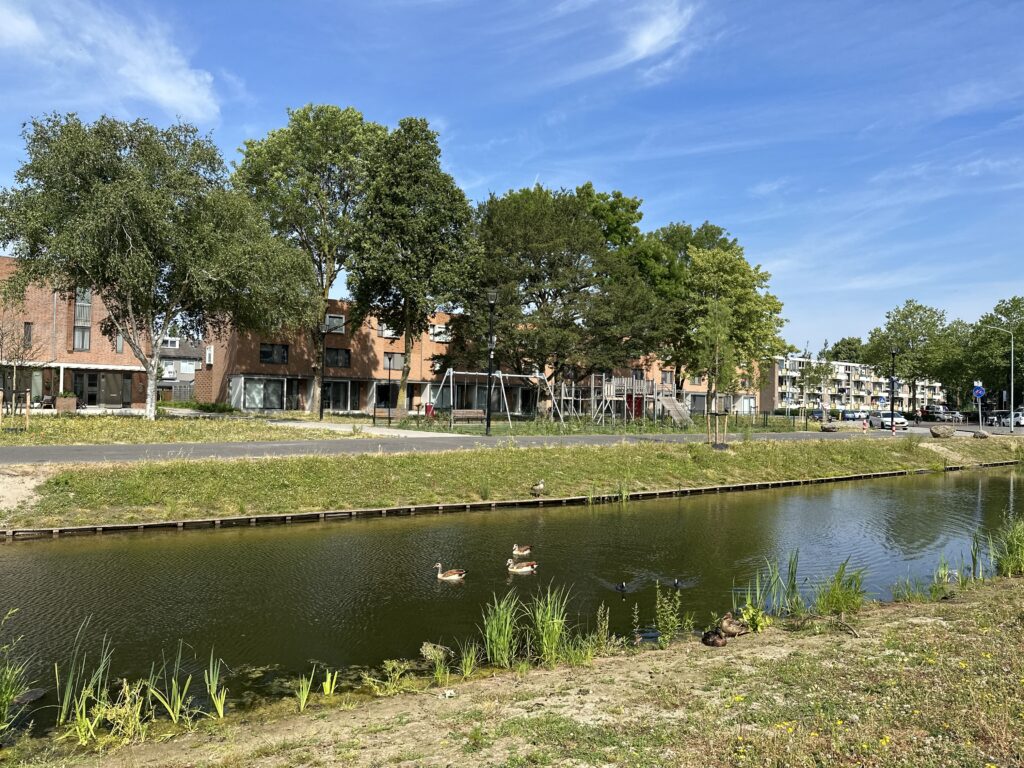Embracing Urban Biodiversity: An Interview with City Ecologist Sjoerd-Dirk Fiaschi-van Der Est

Tell us a bit about yourself and your work?
I’m a city ecologist, and my work involves shaping policy, managing nature, and planning urban spaces. In my spare time, I love observing plants and the wildlife that depend on them, like butterflies, bees, and other insects.
Why is biodiversity an important consideration for climate adaptation in urban spaces?
Biodiversity is crucial for several reasons, and I like to spotlight the similarities between city wildlife and people as they react similarly to adaptation measures. Green spaces benefit both animals and people by promoting health, wellbeing, and happiness, while helping us adapt to climate challenges such as extreme heatwaves and flooding. In Dordrecht, we focus on developing green-blue corridors to enhance climate adaptation, biodiversity, and public health through our policies and plans.
Why did you get involved in the Wielwijk plans? What worked well about the original plans and what were the concerns?
The Wielwijk area has housing projects in development, and I advise my colleagues on taking care of local plants and animals, especially protected species. We have successfully created green-blue corridors in the area, but a major concern was the insufficient integration of biodiversity in the plans. This oversight can lead to habitat destruction and the local extinction of species, such as the hedgehog in Wielwijk.
What were the actual physical changes made to the plans and how do they now better protect biodiversity?
In our adjustments to the plan, we ensured that up to 40% of the new housing projects are dedicated to green and blue spaces. More green spaces mean more habitats for wildlife, which is a significant improvement.
What impact will protecting this biodiversity have on the park and the community? More specifically – what role do hedgehogs (or other species protected by your changes to the plans) play in the ecosystem and why is this important?
Protecting biodiversity contributes to a balanced and healthy ecosystem. For instance, hedgehogs control insect populations by eating bugs. Plus, hedgehogs are cuddly and bring joy to the community. Ensuring their presence in urban areas enhances ecological health and community wellbeing.
From your experience in Wielwijk and as a whole – do you have any lessons that could be applied in other cities looking to incorporate biodiversity in their climate adaptation measures?
Cities should work around existing wildlife habitats and integrate green areas into housing projects. Preserving and using these spaces within urban development is key to maintaining biodiversity and supporting climate adaptation efforts.
Incorporating biodiversity into urban planning isn’t just about protecting wildlife; it’s about creating healthier, more resilient communities for everyone. As Sjoerd-Dirk’s work in Dordrecht shows, thoughtful ecological integration can transform our cities into thriving, sustainable habitats for all.
Curious to learn more about the intersection between citizens science and climate adaptation? Get in touch!
